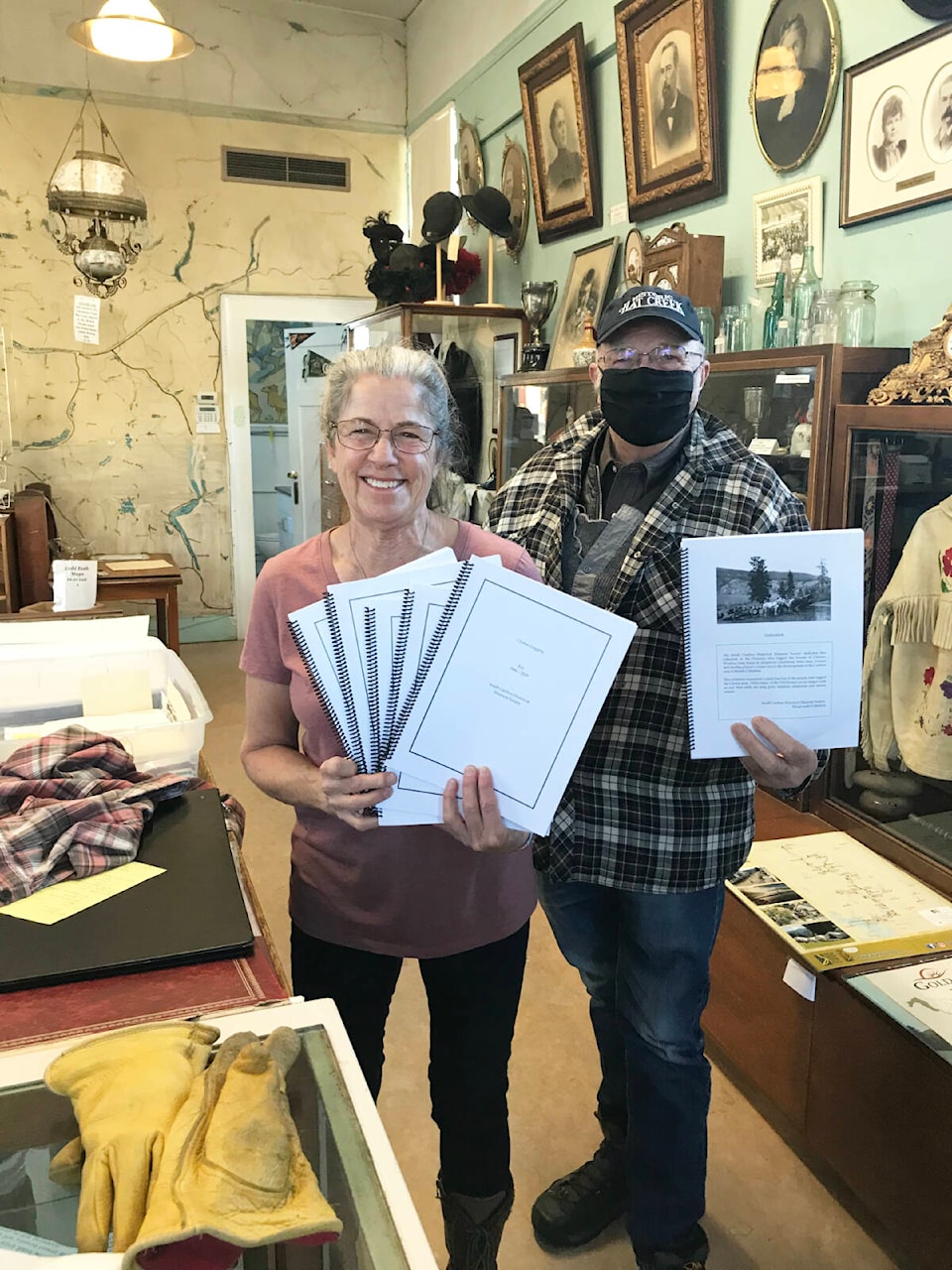Marcia Begin and Robin Fennell didn’t intend to write a book on the history of Clinton’s forest industry.
But that’s what happened after their research into the old days of the logging industry became too big for a single exhibit at the Clinton Museum. Five years and dozens of interviews later, their work has been complied into Clinton Logging 1944-2019.
“I had access to some older info that I gave to the museum and we thought it’d be a great thing to have some pictures and artifacts to go with them,” Fennell said. “I could see that the old way of logging was disappearing (from memory) so that’s how this project started.”
Fennell, a former employee of the Ministry of Forests, said he’s always had a vested interest in the forestry industry. He’s watched it change from small independent sawmills to giant commercial mills and marked its decline over the last several years due to the wildfires and other factors.
Using his contacts from both his time with the ministry and from decades living in Clinton, Fennell began reaching out to people for pictures and stories of the old days.
Begin became involved soon after, interviewing the participants and transcribing their words onto the page. While she’s since moved to Kamloops, Begin said Clinton has a special place in her heart.
“It’s an interesting place and learning about the people who settled the area is quite inspiring,” Begin said. “It was really interesting working with Robin and hearing his stories and talking to other members of the community who donated pictures to the museum. The book is mainly made up of their stories and memories.”
The portable sawmills that used to be found all around Clinton were especially fascinating for Fennell. Foresters would often form tiny villages with their families, using portable shacks taken from campsite to campsite.
In the early days, nothing was mechanized and loggers used horses, two-man crosscut saws and other simple tools to do the job. These days, equipment worth hundreds of thousands of dollars do the work with a vastly reduced workforce, Fennell said.
“It’s just important, I think, to keep track of the change to our industries so if people want to understand it they have someplace to look,” Fennell said. “I certainly didn’t know all the old stories and I liked finding out what people did and who did it.”
Begin said she found the pieces of improvised equipment loggers put together to do the job interesting. At the time, there were no real safety standards and it’s reflected in some of the old makeshift logging trucks and forklifts.
“I liked the pictures that showed how the people had to convert some of the equipment into homemade skidders and loaders. It’s really bizarre looking machinery but they actually worked and helped increase production,” Begin said. “Safety aspects, there was none. No hard hats, no steel-toed boots and no ear protection.”
She said she’s proud of how the book turned out. Several copies of the current version of the book can be accessed at the Clinton Museum, although Fennell is open to updating it. Anyone with stories from the old days is welcome to call the museum at 250-459-2442.
patrick.davies@100milefreepress.net
Like us on Facebook and follow us on Twitter.
